HOW TO TRACK CALORIES AND MACROS WHEN EATING OUT
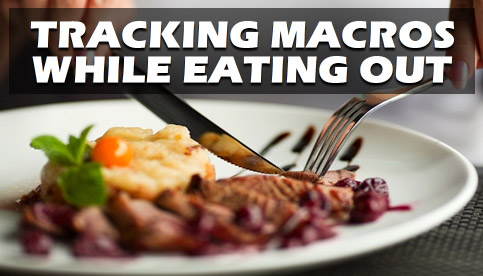
When preparing your own meals from home, figuring out the nutritional content is a breeze.
You know precisely which foods you’re eating and how much, along with access to nutrition labels, food scales, measuring cups and anything else you need to accurately add up the numbers.
Tracking calories and macros while eating out, on the other hand, is usually a different story.
Many restaurants don’t have nutritional information available for their meals, and it can often be tough to pin down exactly what’s on your plate and how to fit it into your overall diet for the day.
Fortunately, staying on course with your nutrition while eating out doesn’t need to be overly complicated.
With a bit of planning and a few simple techniques (along with a healthy perspective on nutritional tracking itself), you can enjoy those restaurant meals with friends and family without it being a source of stress and while still reaching your muscle building and fat burning goals.
Let’s go over it.
Tracking Calories At Restaurants: Keeping Things In Perspective
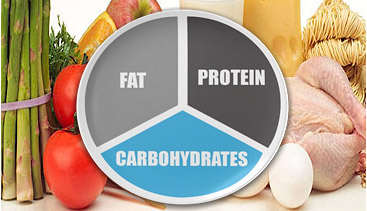
The first important thing to keep in mind here is that proper muscle building and fat burning nutrition is a “big picture” game.
In other words, it’s all about your overall accuracy and consistency in the long term.
Fat loss and muscle growth are not immediate “on/off” switches, and it’s your total intake over the course of several days, weeks and months that will ultimately decide your results.
For that reason, just how closely you’ll need to track your nutrition while eating out largely depends on how often you’re doing it.
If it’s only a one or two time a week occasion, tracking the precise calories and macros is not going to be some sort of critical “make-or-break” scenario.
Rough estimations along with a bit of basic self control are all you’ll really need, and as long as you’re able to just ballpark it somewhat accurately, your overall results in the big picture aren’t going to be noticeably affected.
This is especially true if we’re talking about infrequent special occasions like holidays, birthdays, once-in-a-while family get togethers etc.
Heavily restrict yourself and begin obsessing over calorie going into your mouth and all you’ll be doing is adding an extra layer of unnecessary stress that detracts from the whole experience.
Remember, fitness should be used to enhance the enjoyment of your life rather than being a source of anxiety.
On the other hand, if you’re eating out multiple days a week or even every single day, then yes, you’ll need to dial things in more closely in order to keep your overall nutrition on track.
Given that a proper calorie deficit for fat loss only involves eating around 300-500 calories below maintenance – and that a proper calorie surplus for muscle growth usually lands around 200-300 calories above maintenance – all it takes is a few tracking errors throughout the day to really throw those numbers off.
If you’re routinely eating a restaurant meal that contains 250 calories more than you thought (2 tablespoons of extra oil alone is enough to do this), that could potentially cut your calorie deficit in half right there.
Or, if your goal is to gain muscle, it could double the size of your calorie surplus and lead to excessive fat gain.
The specific degree of nutritional tracking you employ also depends on your experience level and specific training goals.
For example, a beginner who is aiming to maximize fat loss or muscle growth would need to track things more closely since their “intuitive eating skills” won’t be as strong yet and the chances for error will be a lot higher.
On the flip side, an advanced trainee with several years of experience under their belt can usually get away with much looser tracking, often involving nothing more than some quick eye balling.
If you’re aiming to get into a specific shape by a certain deadline (such as a vacation, wedding, photoshoot or competition) that would also increase the need for nutritional accuracy in comparison to someone who is training a bit more casually.
So, all in all, just how accurately you’ll need to track calories and macros when eating out depends on how often you’re doing it, your experience level and your individual training goals.
You can use the information above to decide what is appropriate for you based on the situation.
Now that that’s out of the way, let’s tackle the actual question at hand…
How To Track Calories And Macros While Eating Out
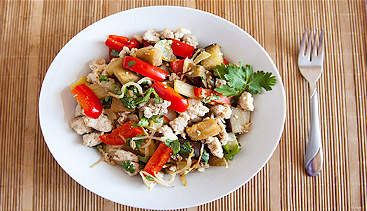
First off, keep in mind that tracking calories at restaurants will never be 100% perfect.
You’re usually not going to know every single ingredient that is included in each dish or the exact quantities of each, and the goal here is to just estimate as best you can.
Also remember that overall calorie intake is far more important than knowing the exact breakdown of protein, carbs and fats.
As long as you’re hitting your minimum daily requirements for protein and fat (I recommend at least 0.8g of protein per pound of body weight and 25% of total calories from fat), you don’t need to obsess over tracking exact macros to the precise gram.
Make an effort to keep them decently balanced in the overall picture, yes, but inter-changing your macros a bit is not going to be a big deal assuming your total calorie intake is reasonably on point overall.
So, how exactly should you go about tracking calories while eating out?
Here are your 4 main options…
1) The first option is to run an online search to see if the restaurant has nutritional information available for their meals.
Many restaurants (especially larger chains) post their menus and nutritional info on their websites.
If you’re able to find the calorie and macro breakdown of the meal you’ll be eating, you’re all set and can simply use that information.
It still won’t be 100% accurate in most cases since portion sizes often vary, but it’ll be close enough and more accurate than trying to figure it out on your own.
2) If the restaurant has no nutritional information available, download a calorie-tracking app like MyFitnessPal or Cronometer and see if you can find a similar meal in their database.
In other words, you can look up the calories and macros for the same item at a different restaurant and use those numbers instead.
For example, if you were eating a chicken quesadilla, you could find plenty of other restaurants with a comparable version that would likely have a similar nutritional profile.
This method certainly isn’t going to be perfect, but it’ll give you a rough estimate to go by.
3) If you can’t find any results for a particular dish, estimate the portion size of each ingredient and look them up individually.
For the chicken quesadilla example, you’d look up the nutritional info for a tortilla, similar portion of chicken, cheese and whatever else is included and add them all together.
When you’re making these calculations, it’s almost always better to overestimate rather than underestimate.
This is because restaurant meals often have a lot of “hidden calories” included from things like oils, sugars, sauces etc.
4) If all else fails, just eyeball it and make your own judgment call as best you can.
If you’re eating a meal that is more complex and contains many different elements that are hard to separate, you’ll just have to estimate it on your own.
Although this is often challenging for beginners, it’s still better than nothing and is something you’ll become more skilled at as you gain further experience.
As outlined in the previous step, you’ll usually be better off to underestimate the calorie total rather than overestimate it, since most restaurant meals are typically higher calorie than you’d think.
In any case, if you’re only eating out once in a while, being off by a couple hundred calories is not going to be a big deal and so you shouldn’t stress out about it too much.
Simple Techniques To Prevent Overeating
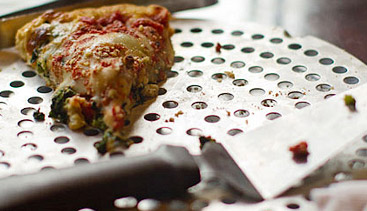
If you’re planning to head out and enjoy a higher calorie restaurant meal but want to keep your nutrition as closely dialed in as possible, here are a few useful tips you can follow…
1) Eat light throughout the earlier portion of the day.
Eating fewer calories at breakfast and during the earlier afternoon hours will create a “calorie buffer” for later where you can enjoy that calorie-dense meal with less of a chance of going overboard for the day as a whole.
You could even take this a bit further if you want by employing a full-on intermittent fasting style approach where you abstain from food completely for the first 6-8 hours of the day and then indulge later on.
2) Drink water before and during your meal.
Consuming water prior to eating can reduce calorie intake slightly by helping to control overall hunger levels.
One study had participants drink 2 cups of water 30 minutes before their breakfast. As a result, they consumed on average 13% fewer calories, unconsciously. (1)
Tea is also a good option.
3) Start off with a salad.
Eating a salad prior to your main course can also curb hunger slightly and lead to a decrease in overall calories eaten. (2)
Just make sure to choose a lower calorie option, since many salads can actually be very calorie-dense depending on the dressing used.
4) Order some veggies with your meal.
Vegetables are high in overall volume and fiber content but very low in calories.
Including a portion of veggies alongside your meal can help to fill you up a bit more rather than causing you to satisfy all of your hunger on higher calorie items.
Just be weary of things like butter and oils since these can add a ton of additional calories if you aren’t careful.
5) Take your time.
We’ve all heard that there’s a delay in how quickly hunger signals travel to the brain during a meal, and it turns out there’s some real truth to this.
One group of researchers found that when subjects chewed their food 40 times instead of 15, they consumed 12% fewer calories on average. (4)
So, slow down a bit and pay extra attention to the taste and texture of your food if you want to reduce the chances of going overboard on total calories.
6) Spice up your meal.
Capsaicin, the compound that gives spicy foods their burning sensation, can slightly blunt appetite. (5)
What If I Accidentally Went Over My Calories?
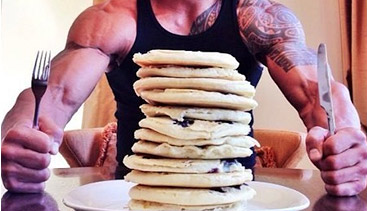
Once again, remember that proper nutrition is all about the big picture.
Everyone goes a bit off course from time to time, and it’s totally unrealistic to expect that you’ll be able to stay 100% on point with your calorie intake every single day, especially when eating out.
If you do end up over-indulging and consume significantly more calories than you planned, you have two basic options.
The first option is to make up for it the next day.
There’s nothing inherently special about the specific time frame of “24 hours” – what’s much more important is your average calorie intake in the bigger picture, spread out over the course of a few days or even a week.
So, if you decided to add a last minute dessert to your meal and ended up consuming an extra 600 calories, you could simply reduce your intake by 600 the next day or by 300 on the following two days.
The second option is to simply accept the fact that you over-ate and just get back on track with your regular diet the next day.
Fat loss and fat gain are both very slow processes that happen gradually over the long term, and “cheating” on your diet every now and then is not going to make much difference as long as it’s happening infrequently.
Once again, it’s the long term that truly counts here.
So, the other option following an accidental restaurant binge is to just move on, not stress out about it, and simply get back on course the following day.
Also keep in mind that if your body weight suddenly increases the next morning after that high calorie meal, this is primarily due to increased water retention (mainly from the additional sodium) and is not a result of actual fat gain.
Your physique might look a little bit “softer”, but it will return back to normal within a day or two of resuming your regular diet.
Counting Calories While Eating Out: The Bottom Line

Everyone enjoys a good restaurant meal here and there, and eating out doesn’t mean that your nutrition plan has to go down the tubes.
You can either look up the nutritional information online if it’s available, or use one of the methods outlined in this post to estimate it.
Don’t forget to keep things in perspective here as well.
Proper muscle building and fat burning nutrition is all about the big picture, and your calories don’t need to be 100% dead-on every single day.
Roughly ballparking the calorie content of your meals when eating out is usually enough as long as you’re not doing it too frequently and the rest of your diet is otherwise relatively on point.
If you found this article helpful, make sure to sign up for your FREE custom fitness plan below...




